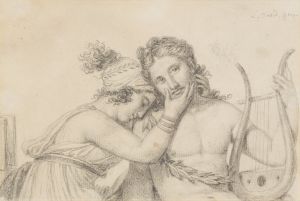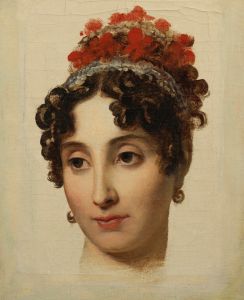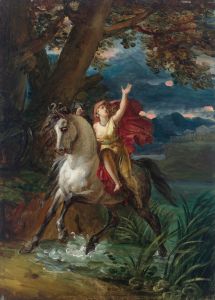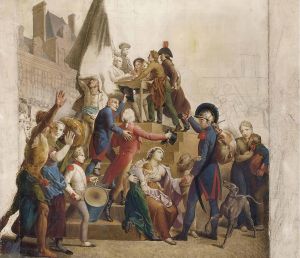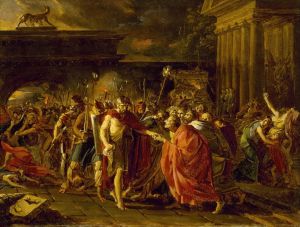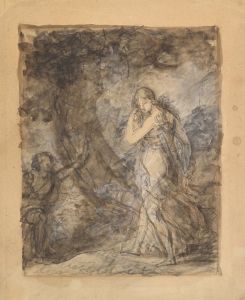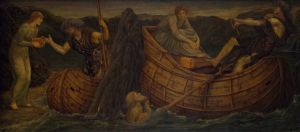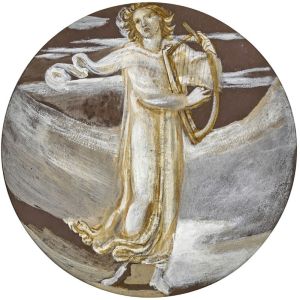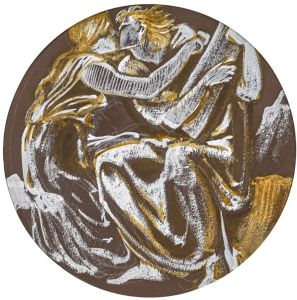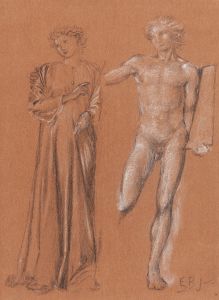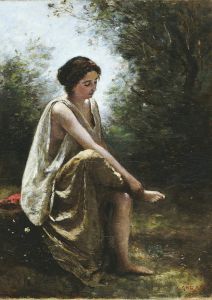
Orpheus tries to hold on to Eurydice
A hand-painted replica of François Gérard’s masterpiece Orpheus tries to hold on to Eurydice, meticulously crafted by professional artists to capture the true essence of the original. Each piece is created with museum-quality canvas and rare mineral pigments, carefully painted by experienced artists with delicate brushstrokes and rich, layered colors to perfectly recreate the texture of the original artwork. Unlike machine-printed reproductions, this hand-painted version brings the painting to life, infused with the artist’s emotions and skill in every stroke. Whether for personal collection or home decoration, it instantly elevates the artistic atmosphere of any space.
François Gérard's painting Orpheus tries to hold on to Eurydice is a notable work of art that depicts a scene from the ancient Greek myth of Orpheus and Eurydice. Gérard, a prominent French painter of the Neoclassical period, completed this painting in 1814. The artwork captures the emotional climax of the myth, where Orpheus, having descended into the Underworld to retrieve his beloved Eurydice, loses her forever due to a moment of doubt and disobedience.
In the myth, Orpheus, a legendary musician and poet, is granted permission by Hades and Persephone to lead Eurydice back to the world of the living on the condition that he does not look back at her until they have both reached the surface. Overcome by love and uncertainty, Orpheus turns to look at Eurydice before they are fully out of the Underworld, causing her to vanish forever. Gérard's painting portrays this tragic moment with dramatic intensity and emotional depth.
The composition of the painting emphasizes the anguish and desperation of the characters. Orpheus is shown reaching out to Eurydice, his expression filled with sorrow and regret, while Eurydice appears resigned to her fate, her form already fading as she is pulled back into the shadows of the Underworld. Gérard's use of light and shadow enhances the emotional impact of the scene, with Eurydice illuminated as a symbol of lost hope and Orpheus partially shrouded in darkness, reflecting his despair.
François Gérard was a student of Jacques-Louis David, one of the leading figures of Neoclassicism, and his works often reflect the style's emphasis on clarity, order, and classical themes. This painting is a prime example of Gérard's ability to combine technical skill with emotional storytelling. The mythological subject matter and the dramatic rendering of the figures align with the Neoclassical tradition of drawing inspiration from ancient history and mythology.
The painting is housed in the Louvre Museum in Paris, where it is part of the collection of 19th-century French paintings. It continues to be admired for its artistic merit and its poignant depiction of one of the most enduring love stories from classical mythology. Gérard's Orpheus tries to hold on to Eurydice remains a significant contribution to the Neoclassical movement and a testament to the timeless power of mythological narratives in art.





